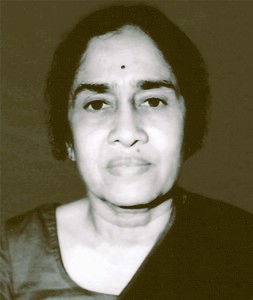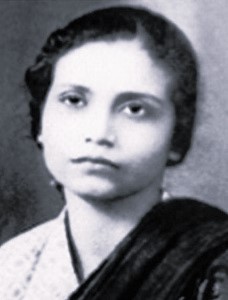Jan 01, 2026
Jan 01, 2026
International Women’s Day
Even the most talented women face challenges at workplaces but they get past those obstacles with sheer determination to prove themselves even in the toughest work environment.
International days are essentially meant for educating the public on issues of concern and encouraging people to mobilize political will to address them. One such day is International Women’s Day. It is celebrated on March 8 every year. It is the day meant for recalling the lives of brave women who trod new paths to create a world “that’s diverse, equitable, and inclusive”. For, such celebration of women’s achievement sensitizes the public about discrimination and encourages them to act collectively “to drive gender parity”.
 One such inspiring woman worth remembering on this day is Dr Kamala Sohonie, an Indian biochemist. She was born in 1912 in Indore. Her father, Dr Narayanarao Bhagvat, was a chemist. On graduating from Bombay University in 1933 with Chemistry as her main and physics as a subsidiary subject, she, driven by a desire to become a chemist like her father, applied to the Indian Institute of Science (IISc) for a research fellowship.
One such inspiring woman worth remembering on this day is Dr Kamala Sohonie, an Indian biochemist. She was born in 1912 in Indore. Her father, Dr Narayanarao Bhagvat, was a chemist. On graduating from Bombay University in 1933 with Chemistry as her main and physics as a subsidiary subject, she, driven by a desire to become a chemist like her father, applied to the Indian Institute of Science (IISc) for a research fellowship.
Unsurprisingly, it was turned down by the then Director Prof C V Raman on the grounds that women were not competent enough to pursue research. This “extreme egotist”—who, as Prof Kameshwar Wali said, quoting Sivaraj Ramaseshan, the biographer of Prof Raman, “in private conversation … showed such an unbelievable scientific humility as to make one wonder which was his true self”—on Ms Kamala sitting on Satyagraha outside his office, granted her admission at the IISc but on the condition that she would be on probation during the first year of her research and her work would not be recognized until he was satisfied with its quality.
Brushing aside the underlying humiliation of the conditions, Ms Kamala joined IISc and proved her worth by working on proteins in milk, pulses, and legumes and obtained her MSc in biochemistry with distinction in1936 besides paving the way for women to get admission in IISc.
Later, she was invited to Cambridge University to work under Dr Derek Richter in the Frederick G Hopkins laboratory. Working on plant (potato) tissues under the guidance of Dr Robin Hill, she discovered that every cell of plant tissue contained Cytochrome C which plays a critical role in cellular respiration. This was an original discovery that embraced the whole plant, animal, and human cells. Submitting a thesis of 40 pages narrating this discovery in 14 months, she became the first Indian woman to obtain a PhD from a foreign university in a science discipline. Subsequently, she worked in the Sir William Dawn Institute of Biochemistry at the Cambridge University with the Nobel Laureate, Prof. Fredrick Hopkins, in the areas of biological oxidation and reduction.
Returning to India in 1939, she joined Lady Hardinge Medical College, New Delhi, as Professor and Head of the Biochemistry Department. In 1947 she joined the Royal Institute of Science in Bombay and worked on leguminous proteins, trypsin inhibitors, and other compounds that are known to reduce the digestibility of Indian legumes, such as Neera, palm gur, and palm molasses, and paddy flour formed during milling and polishing of rice. She was presented with the Rashtrapathi award for her pioneering work on Neera, in which she found significant quantities of Vitamin A, Vitamin C, and iron, and hence that was proved to be an important food for malnourished tribal adolescent children and pregnant women for improving their overall health. Despite such research output, she was denied the directorship of the institute for many years,and when she finally became the Director, her first guide, Dr Derik Richter, remarked that she “made history by being the first lady Director of such a big institute.
She was no doubt happy about her research work, but somewhere deep in the recesses of her mind there was a sense of hurt feeling, as echoed in one of her interviews: “Though Raman was a great scientist, he was very narrow-minded. I can never forget the way he treated me just because I was a woman. Even then, Raman didn’t admit me as a regular student. This was a great insult to me. The bias against women was so bad at that time. What can one expect if even a Nobel Laureate behaves in such a way?”
Dr Kamala Sohonie—a classic example of the struggle waged by the pioneering women scientists of India—passed away in 1988, at the age of 86, shortly after being honored in a facilitation ceremony organized by ICMR in New Delhi.
 Dr Bibha Chowdhuri is another unsung woman physicist from Bengal. She was born in 1913 in Calcutta. Her father, Banku Behari Chowdhuri was a doctor and her mother Urmila Devi was the daughter of a Brahmo Samaj Missionary. She obtained her MSc degree in Physics from Calcutta University in 1936. She then approached Prof D M Bose for joining his research group to pursue research.
Dr Bibha Chowdhuri is another unsung woman physicist from Bengal. She was born in 1913 in Calcutta. Her father, Banku Behari Chowdhuri was a doctor and her mother Urmila Devi was the daughter of a Brahmo Samaj Missionary. She obtained her MSc degree in Physics from Calcutta University in 1936. She then approached Prof D M Bose for joining his research group to pursue research.
As happened with Kamala Sohonie, she too faced the reluctance of Prof Bose in accepting her for research on the plea that he did not have any research project suitable for women. But she finally persuaded him to relent and published jointly with Prof Bose four consecutive papers on ‘mesons’ in June 1940, February 1941, August 1941, and March 1942, all in Nature. She was the first to measure the mass of meson from stars formed in the photographic emulsion when exposed to cosmic rays. But unfortunately, they were forced to discontinue this line of research due to non-availability of photographic plates owing to the restrictions imposed during World War II.
As fate would have it, almost a decade later in 1950, CF Powell received the Nobel Prize “for his development of the photographic method of studying nuclear processes and his discoveries regarding mesons” using the same method as was used by Bibha Chowdhuri. Powell, however, acknowledged the work carried out at the Bose Institute: “In 1941, Bose and Chowdhuri had pointed out that it is possible, in principle, to distinguish between the tracks of protons and mesons in an emulsion … Bose and Chowdhuri exposed ‘half tone’ plates at mountain altitudes and examined the scattering of the resulting tracks. They concluded that many of the charged particles arrested in their plates were lighter than protons, their mean mass being 200me. The physical basis of their methods was correct and their work represent the first approach to the scattering method of determining momenta of charged particles by observation of their tracks in emulsion.”
This first woman high energy physicist of India joined the cosmic-ray laboratory of Nobel Laureate PMS Blackett in 1945 and worked on “Extensive Air Showers Associated with Penetrating Particles” in early 1949 and obtained her PhD. A local newspaper of Manchester published an interview with her, succinctly reported her work under the title, “Meet India’s New Woman Scientist—She has an eye for cosmic rays”.
Finishing her PhD, she wanted to spend some time in the laboratory of Prof Louis Leprince-Ringuet which was known for the photographic emulsion technique, a field in which she started her research career. When her application for financial assistance was received along with a testimonial from J G Wilson, her thesis examiner, by Bhabha for his comments, he, forgetting that Dr Bhibha had worked earlier on emulsion techniques, had not evinced interest in her application on the ground that she worked on ‘extensive air showers’ while the proposed project involves work on emulsion techniques.
In 1949, she was appointed as a Research Fellow in the Experimental Physics group of TIFR for a period of five years. She thus had the distinction of being the first woman scientist to have joined TIFR. Intriguingly, her appointment letter as well as the housing contract letter referred to her as ‘he’ instead of ‘she’ denoting the kind of gender-biased atmosphere prevailing on the campus. At TIFR, she was reported to be in-charge of the Cloud chamber group and was involved in the investigations of the penetrating component of the cosmic-ray air-shower.
Later she joined PRL, Ahmedabad where she was engaged in studying the characteristics of muons of energy >150 GeV with the neon flash tube technique at a depth of 580-meter water equivalent at Kolar Goldfield. She published several papers from PRL with her PhD student YC Saxena, who “asserted that the scientific work of BC was of high quality”.
After the death of Vikram Sarabhai, she opted for voluntary retirement for reasons unknown and moved to Calcutta. She however, continued her research work on high energy physics in collaboration with scientists from Calcutta University, Saha Institute of Nuclear Physics, VECC, and the Indian Association for the Cultivation of Science using solid-state track detectors like the CR-39 and kept publishing papers till almost her death.
Her last paper, “Existence of charge phenomena in 56Fe+27AI collisions at 1.88A GeV”, was published in the Indian Journal of Physics in 1990. And in 1991, she died in obscurity in Calcutta. No obituary was published in any professional journal or periodical about this lady who proved to be a devoted scientist till her last breath.
Bibha Chowdhuri’s life was thus full of challenges and struggles. Her joining the male-dominated area of experimental physics in 1940s, her going abroad all alone from pre-independent India for carrying out further research, and her pursuit of research interests in Indian institutes that were not well disposed towards women researchers well establishes her “indomitable mental strength and conviction”.
It is however heartening to know that two honors have been bestowed on Dr Bibha Chowdhuri posthumously: One, the International Astronomical Union named a star ‘Bibha’ after Bibha Chowdhuri in December 2019, and two, in March 2020, the Ministry of Women and Child Development, Government of India, announced a Physics Chair named after Bibha Chowdhuri. She finally earned her rightful place in the pantheon of Indian scientists.
It is not known if the ecosystem of research institutions in India has changed anyway, but these two women scientists tell us how to manage one’s emotions such as anger, fear, and sadness emanating out of distressing work environments and taking one’s careers to new heights
.
11-Mar-2023
More by : Gollamudi Radha Krishna Murty